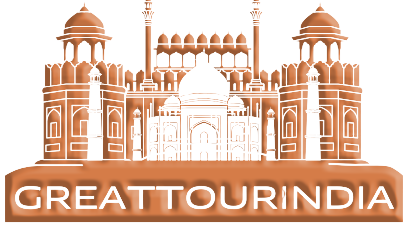India is a land of breathtaking contrasts — from majestic forts and palaces to lush valleys, vast deserts, and pristine beaches. At Great Tour India, we believe that every traveler deserves to return home with photographs that truly capture the magic of this incredible country.
Whether you’re an amateur with a smartphone or a passionate photographer with a DSLR, here are some essential tips to help you frame India’s iconic monuments and landscapes in the most stunning way.
1. Understand the Light: Golden Hour is Your Best Friend
No matter where you are — the Taj Mahal, Jaipur’s Amber Fort, or Kerala’s backwaters — the quality of light makes or breaks your photo.
✅ Golden Hour (the hour after sunrise and the hour before sunset) offers the most flattering, warm-toned light. It softens shadows and gives everything a magical glow.
Avoid harsh midday sun, especially in places like Rajasthan or Goa, where the brightness can flatten details and create hard shadows.
Pro Tip: If you must shoot midday, find shaded spots or use backlighting creatively to soften the scene.
2. Play with Angles and Perspectives
Iconic monuments like the Qutub Minar or Gateway of India have been photographed a million times — so how do you make your shot stand out?
✅ Don’t just take the typical straight-on shot. Walk around, crouch down, shoot from a low angle, or look up for dramatic framing.
✅ Use leading lines — pathways, archways, or rows of trees — to guide the viewer’s eye toward your subject.
✅To give your photo more depth, include foreground elements such as flowers or people.
Example: When taking pictures of Hawa Mahal, attempt to photograph the lively street activity below as well, in order to enliven the image.
3. Capture the Spirit, Not Just the Scene
At Great Tour India, we encourage travelers to go beyond postcard-perfect shots and capture the feeling of a place.
✅ Photograph local people (always with permission) to showcase the culture.
✅ Zoom in on details: the intricate carvings at Khajuraho, the colors of spices in a Jaipur market, or the patterns in a Rajasthani turban.
✅ Tell a story — maybe it’s a local vendor setting up before sunrise or a camel caravan moving across the Thar Desert.
Remember: The best travel photos are those that evoke emotion, not just beauty.
4. Use the Right Settings and Tools
You don’t need fancy equipment, but knowing your camera helps.
✅ Smartphone users: Turn on gridlines for better composition, use HDR for balanced exposure, and clean your lens regularly (you’d be surprised how many blurry shots come from smudges).
✅ DSLR/Mirrorless users:
- Use a small aperture (f/8–f/16) for sharp landscapes.
- For monuments, a wide-angle lens helps capture grandeur.
- A tripod is invaluable for sunrise/sunset or night shots.
Bonus Tool: Use apps like Snapseed or Lightroom Mobile to enhance your images without over-editing.
5. Respect Local Customs and the Environment
India’s monuments and natural spots are often sacred or environmentally sensitive.
✅ Always follow posted rules — no flash in temples, no climbing restricted areas.
✅ Avoid leaving litter behind, especially in natural landscapes.
✅ When photographing people, smile, ask politely, and respect if someone says no.
At Great Tour India, we promote responsible tourism — so we encourage all travelers to protect the beauty they’re capturing.
6. Night Photography: A Magical Challenge
India’s monuments are often beautifully lit at night — think of the illuminated Mysore Palace or the ghats of Varanasi under the stars.
✅ Use a tripod or steady surface for long exposures.
✅ Experiment with reflections (like the Taj Mahal reflected in the Yamuna) for unique compositions.
✅ Adjust your ISO and shutter speed carefully to avoid grainy, shaky images.
Pro Tip: Night markets and street scenes are also wonderful to capture — full of color, life, and atmosphere.
7. Plan Ahead but Stay Flexible
Some of the best photos are taken simply by being at the right place at the right time.
✅ Research sunrise/sunset times, local festivals, and less-crowded hours (for example, early mornings at Jaipur’s Amer Fort or late afternoons at Humayun’s Tomb).
✅ But also stay open to surprises — sometimes an unplanned moment, like a street parade or a rainbow after rain, will give you your most memorable shot.
Final Thoughts: Let Great Tour India Be Your Guide
Traveling through India is a feast for the senses, and we at Great Tour India are here to make sure your journey is unforgettable — not just in memory but also in photos.
With careful planning, creativity, and respect for your surroundings, you can return home with a gallery of images that tell the unique story of your adventure.
Want expert-led photography tours or custom travel packages designed for photography lovers? Reach out to Great Tour India — we’re ready to help you create the trip (and the photos) of a lifetime.


0 Comment